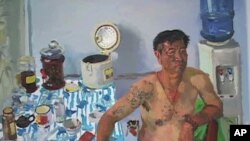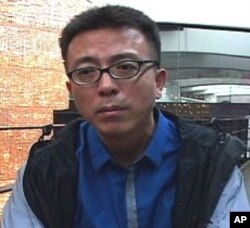China’s rapid economic development has transformed the entire nation. Big cities like Beijing or Shanghai are well-known success stories, but the progress also has left its mark on smaller towns. One of China's most accomplished and successful artists uncovered the joy and sadness that have come with changes at every level of Chinese society, when he returned to his small hometown in the northeastern part of the country.
In 2008, ArtPrice.com, a French web site that monitors the international art market, listed China’s Liu Xiaodong as the 10th bestselling contemporary artist in the world.
Liu’s oil paintings are distinctive in that they depict the everyday life of China’s laobaixing, or ordinary people.
After the Communist Party took power in 1949, towns like Jincheng experienced an industrialization boom. Then, as wealth moved to the big cities, Jincheng's factories closed and people had to find other ways to make a living.
"Right now, all of the factory workers have had to find other jobs. Before, they were all farmers who came to the factories to look for opportunities, or to provide good fortunes for their sons. Now, their sons have to find ways again to change themselves, so they go back to the countryside," Liu said.
Jerome Sans, curator of the exhibit, says Liu's work shows one reality of a modernizing China - the people who are left.
"He is depicting social realities, social catastrophes, realities which have no value, but who have serious human value, showing problems mostly," Sans said.
Sans compares Liu to a filmmaker. The artist used old photos and notes to first map out the ideas for his paintings. A film by Taiwan director Hou Hsiao-Hsien delves into the artist’s thinking as he worked.
In Jingcheng, Liu paints the room in the little house where he was born. He paints Xuzi, a friend who has been laid off by the paper mill. Liu also paints other old friends in their jobs - a policeman, a karaoke club manager, an ex-convict turned restaurant owner.
"As society changes, every sector is moving and the changes affect each other. All this made me very surprised. I discovered that a person’s ability to adapt is like grass in the natural world. When winter comes, it is dormant, but it comes back to life when spring returns." said Liu.
Liu's world is filled with ordinary people, most of whom struggle to keep up with and survive in today’s China.











